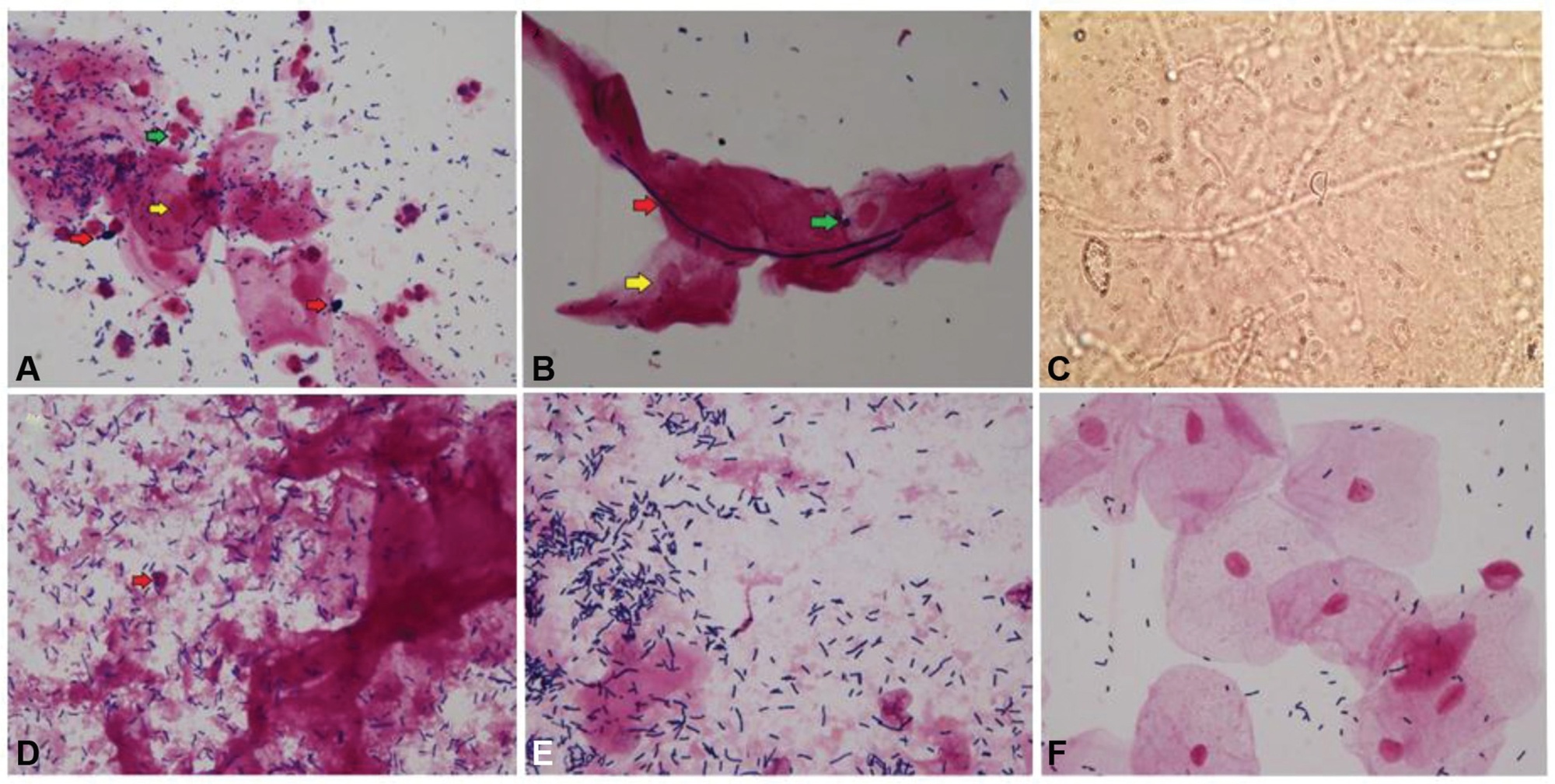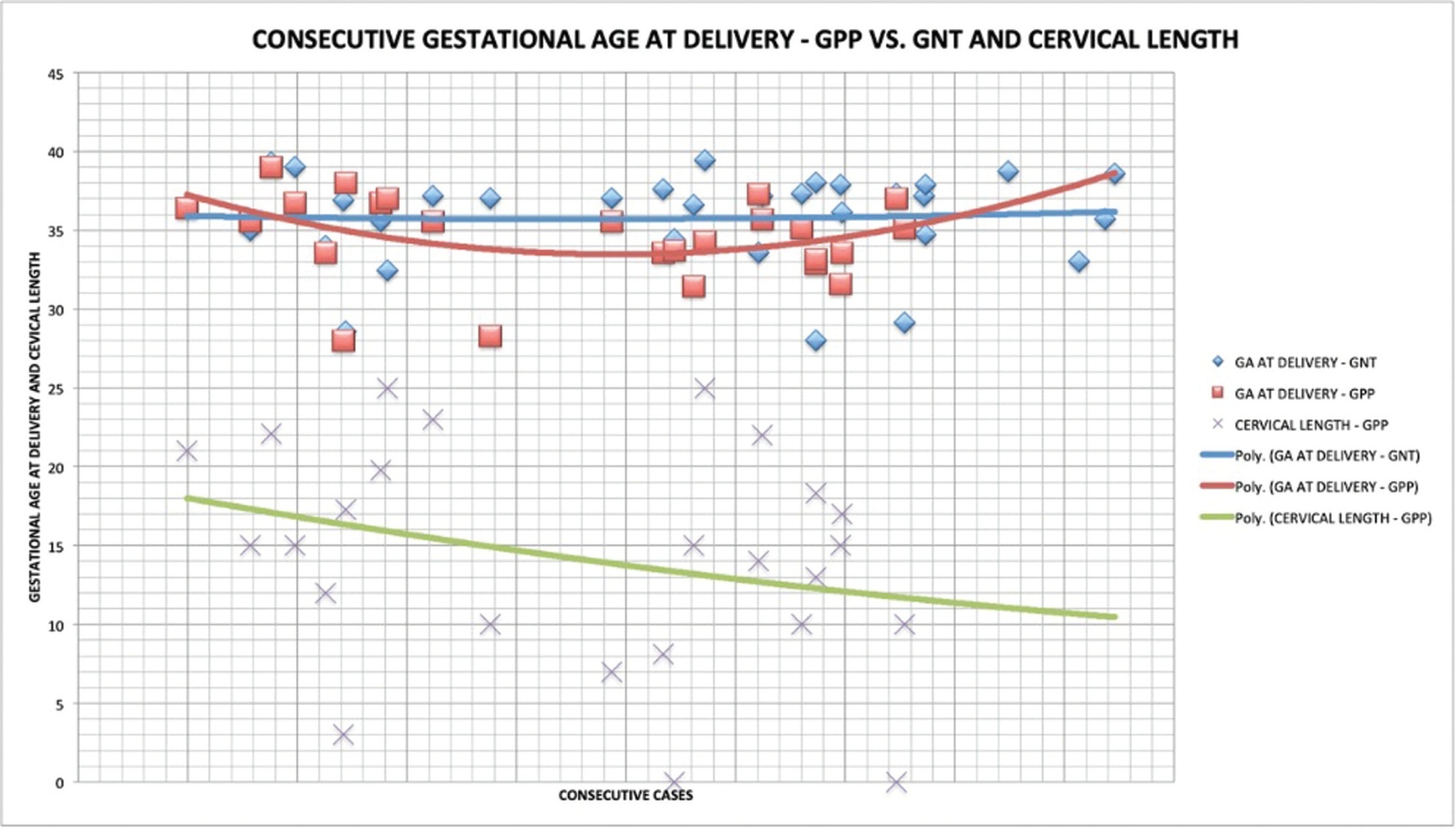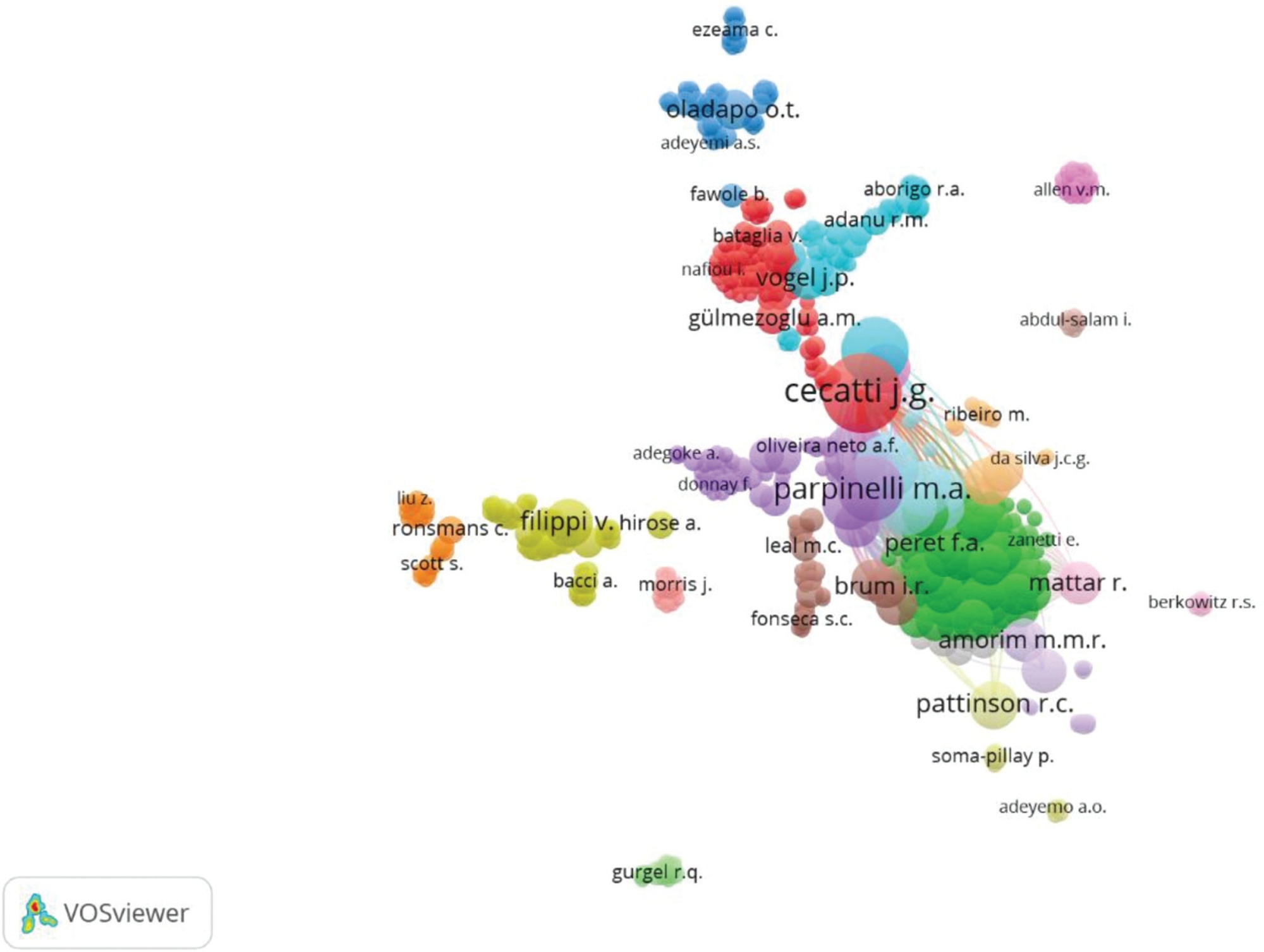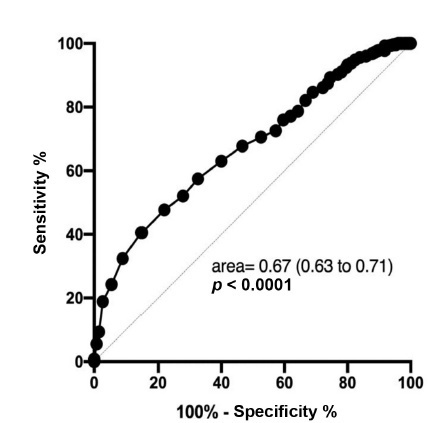Summary
Revista Brasileira de Ginecologia e Obstetrícia. 2020;42(10):642-648
To evaluate the agreement between the histopathological diagnoses of preoperative endometrial samples and surgical specimens and correlate the agreement between the diagnoses with the impact on surgical management and the survival of patients with endometrial adenocarcinomas.
Sixty-two patients treated for endometrial cancer at a university hospital from 2002 to 2011 were retrospectively evaluated. The histopathological findings of preoperative endometrial samples and of surgical specimens were analyzed. The patients were subjected to hysterectomy as well as adjuvant treatment, if necessary, and clinical follow-up, according to the institutional protocol. Lesions were classified as endometrioid tumor (type 1) grades 1, 2, or 3 or non-endometrioid carcinoma (type 2).
The agreement between the histopathological diagnoses based on preoperative endometrial samples and surgical specimens was fair (Kappa: 0.40; p < 0.001). However, the agreement was very significant for tumor type and grade, in which a higher concordance occurred at a higher grade. The percentage of patients with lymph nodes affected was 19.2%;. Although most patients presenting with disease remission or cure were in the early stages (90.5%;), there were no significant differences between those patients who had a misdiagnosis (11/16; 68.8%;) and those who had a correct diagnosis (25/33; 75.8%;) based on preoperative endometrial sampling (p = 0.605).
Our findings corroborate the literature and confirm the under staging of preoperative endometrial samples based on histopathological assessment, especially for lower grade endometrial tumors. We suggest that the preoperative diagnosis should be complemented with other methods to better plan the surgical management strategy.

Summary
Revista Brasileira de Ginecologia e Obstetrícia. 2020;42(10):634-641
To identify clinical, microscopic, and biochemical characteristics that differentiate cytolytic vaginosis (CV) from vulvovaginal candidiasis (VVC).
The present cross-sectional study analyzed the vaginal contents of 24 non-pregnant women aged 18 to 42 years who were attended at the Genital Infections Clinic at Centro de Atenção Integral à Saúde da Mulher da Universidade Estadual de Campinas (CAISM-UNICAMP). They were diagnosed either with (CV = 8, VVC = 8) or without vulvovaginitis or vaginal dysbiosis (controls). The socio-demographic, clinical, and gynecological data were obtained from a detailed patient interview. Samples of the vaginal contents were collected for analysis of vaginal pH, gram stain, and specific fungal culture. The Kruskal-Wallis and Fisher exact tests were used to compare the differences between the groups. Odds ratios were used to compare the categorical variables. The significance level was considered at p < 0.05.
Both women with CV and VVC had a lumpy vaginal discharge (p = 0,002) and vaginal hyperemia (p = 0.001), compared with controls. The inflammatory process was more intense in the VVC group (p = 0.001). In the CV group, there was statistical significance for the lactobacillus amount (p = 0.006), vaginal epithelium lysis (p = 0.001), and vaginal pH (p = 0.0002).
Cytolytic vaginosis and VVC diagnoses rarely differ on clinical characteristics but have different laboratorial findings. The present study highlights the importance of conducting an accurate investigation through laboratory tests rather than clinical criteria to avoid misdiagnosis.

Summary
Revista Brasileira de Ginecologia e Obstetrícia. 2020;42(10):630-633
Primary dysmenorrhea occurs due to abnormal levels of prostanoids, uterine contractions, and uterine blood flow. However, the reasons for pain in primary dysmenorrhea have not yet been clarified. We examined the blood flow alterations in patients with primary dysmenorrhea and determined the relationship between ischemia-modified albumin (IMA) levels, as an ischemia indicator, and primary dysmenorrhea.
In the present study, 37 patients who had primary dysmenorrhea and were in their luteal and menstrual phase of their menstrual cycles were included. Thirty individuals who had similar demographic characteristics, who were between 18 and 30 years old and did not have gynecologic disease were included as control individuals. Their uterine artery Doppler indices and serum IMA levels were measured.
Menstrual phase plasma IMA levels were significantly higher than luteal phase IMA levels, both in the patient and in the control groups (p < 0.001). Although the menstrual phase IMA levels of patients were significantly higher than those of controls, luteal phase IMA levels were not significantly different between the two groups. Menstrual uterine artery pulsatility index (PI) and resistance index (RI) of primary dysmenorrhea patients were significantly different when compared with luteal uterine artery PI and RI levels. There was a positive correlation between menstrual phase IMA and uterine artery PI and RI in the primary dysmenorrhea.
Ischemia plays an important role in the etiology of the pain, which is frequently observed in patients with primary dysmenorrhea. Ischemia-modified albumin levels are considered as an efficient marker to determine the severity of pain and to indicate ischemia in primary dysmenorrhea.
Summary
Revista Brasileira de Ginecologia e Obstetrícia. 2020;42(10):621-629
The present study aims to determine if the use of cervical pessary plus progesterone in short-cervix (≤ 25 mm) dichorionic-diamniotic (DC-DA) twin pregnancies is equivalent to the rate of preterm births (PBs) with no intervention in unselected DC-DA twin pregnancies.
A historical cohort study was performed between 2010 and 2018, including a total of 57 pregnant women with DC-DA twin pregnancies. The women admitted from 2010 to 2012 (n = 32) received no treatment, and were not selected by cervical length (Non-Treated group, NTG), whereas those admitted from 2013 to 2018 (n = 25), were routinely submitted to cervical pessary plus progesterone after the diagnosis of short cervix from the 18th to the 27th weeks of gestation (Pessary-Progesterone group, PPG). The primary outcome analyzed was the rate of PBs before 34 weeks.
There were no statistical differences between the NTG and the PPG regarding PB < 34 weeks (18.8%; versus 40.0%; respectively; p = 0.07) and the mean birthweight of the smallest twin (2,037 ± 425 g versus 2,195 ± 665 g; p = 0.327). The Kaplan-Meyer Survival analysis was performed, and there were no differences between the groups before 31.5 weeks. Logistic regression showed that a previous PB (< 37 weeks) presented an odds ratio (OR) of 15.951 (95%; confidence interval [95%;CI]: 1.294-196.557; p = 0.031*) for PB < 34 weeks in the PPG.
In DC-DA twin pregnancies with a short cervix, (which means a higher risk of PB), the treatment with cervical pessary plus progesterone could be considered equivalent in several aspects related to PB in the NTG, despite the big difference between these groups.

Summary
Revista Brasileira de Ginecologia e Obstetrícia. 2020;42(10):614-620
To evaluate the global productivity regarding original articles on maternal near-miss (MNM).
We conducted a bibliometric analysis of original articles published from 2008 to November 2019 in the journals indexed in the Scopus database. The averages of the number of articles by author, of the number of authors by article, of the number of citations by article, and the total number of documents with one or more authors were obtained. An analysis of the co-citation of authors and a co-occurrence analysis of the terms included in the titles and abstracts were performed and were presented as network visualization maps.
A total of 326 original articles were analyzed. There was an increase in the number of articles (p < 0.001; average annual growth rate = 12.54%;). A total of 1,399 authors, an average number of articles per author of 4.29, with an index of authors per document of 0.23, and an index of co-authors per document of 8.16 were identified. A total of 85 countries contributed with original articles on MNM. Among the top ten countries regarding the contribution of articles, five were low and middle-income countries (LMICs). Brazil had the highest volume of production (31.1%;), followed by the US (11.5%;). Terms related to countries and the measurement of the rates and cases of MNM and the associated factors were found in recent years in the analysis of the co-occurrence of terms.
There was an increase in the production of original articles on MNM, with a significant participation of authors and institutions from LMICs, which reveals a growing interest in the use of MNM indicators to improve the quality of maternal health care.

Summary
Revista Brasileira de Ginecologia e Obstetrícia. 2020;42(10):607-613
The present study aims to analyze adverse fetal or neonatal outcomes in women with gestational diabetes, including fetal death, preterm deliveries, birthweight, neonatal morbidity and mortality, as well as the synergic effect of concomitant pregnancy risk factors and poor obstetric outcomes, as advanced maternal age, maternal obesity and pre-eclampsia in their worsening.
The present cohort retrospective study included all pregnant women with gestational diabetes, with surveillance and childbirth at the Hospital da Senhora da Oliveira during the years of 2017 and 2018. The data were collected from the medical electronic records registered in health informatic programs Sclinico and Obscare, and statistical simple and multivariate analysis was done using IBM SPSS Statistics.
The study participants included 301 pregnant women that contributed to 7.36% of the total institution childbirths of the same years, in a total of 300 live births. It was analyzed the influence of pre-eclampsia coexistence in neonatal morbidity (p = 0.004), in the occurrence of newborns of low and very low birthweight (p < 0.01) and in preterm deliveries (p < 0.01). The influence of maternal obesity (p = 0.270; p = 0.992; p = 0.684) and of advanced maternal age in these 3 outcomes was also analyzed (p = 0,806; p = 0.879; p = 0.985).Using a multivariate analysis, the only models with statistic significance to predict the three neonatal outcomes included only pre-eclampsia (p = 0.04; p < 0.01; p < 0.01).
Only coexistence of pre-eclampsia showed an association with adverse neonatal outcomes (neonatal morbidity, newborns of low and very low birthweight and preterm deliveries) and can be used as a predictor of them in women with gestational diabetes.
Summary
Revista Brasileira de Ginecologia e Obstetrícia. 2020;42(9):555-561
To evaluate the role of clinical features and preoperativemeasurement of cancer antigen 125 (CA125), human epididymis protein(HE4), and carcinoembryonic antigen (CEA) serum levels in women with benign and malignant non-epithelial ovarian tumors.
One hundred and nineteen consecutive women with germ cell, sex cordstromal, and ovarian leiomyomas were included in this study. The preoperative levels of biomarkers were measured, and then surgery and histopathological analysis were performed. Information about the treatment and disease recurrence were obtained from the medical files of patients.
Our sample included 71 women with germ cell tumors (64 benign and 7 malignant), 46 with sex cord-stromal tumors (32 benign and 14 malignant), and 2 with ovarian leiomyomas. Among benign germ cell tumors, 63 were mature teratomas, and, amongmalignant, fourwere immatureteratomas. Themost common tumors in the sex cordstromal group were fibromas (benign) and granulosa cell tumor (malignant). The biomarker serum levels were not different among benign andmalignant non-epithelial ovarian tumors. Fertility-sparing surgeries were performed in 5 (71.4%) women with malignant germ cell tumor. Eleven (78.6%) patients with malignant sex cord-stromal tumors were treated with fertility-sparing surgeries. Five women (71.4%) with germ cell tumors and only 1 (7.1%) with sex cord-stromal tumor were treated with chemotherapy. One woman with germ cell tumor recurred and died of the disease and one woman with sex cord-stromal tumor recurred.
Non-epithelial ovarian tumors were benign in the majority of cases, and the malignant caseswere diagnosed at initial stages with good prognosis. Themeasurements of CA125, HE4, and CEA serum levels were not useful in the preoperative diagnosis of these tumors.
Summary
Revista Brasileira de Ginecologia e Obstetrícia. 2020;42(9):547-554
To characterize the sociodemographic profile of women victims of sexual violence treated at a university hospital in southern Brazil.
The present cross-sectional study included all female victims of sexual violence who attended the sexual violence unit at the Hospital de Clínicas de Porto Alegre (HCPA, in the Portuguese acronym) from April 18, 2000 to December 31, 2017.Data were extracted from the electronic record of the patients and stored in a standardized questionnaire database with epidemiological aspects of the victim, the perpetrators and the type of aggression. Statistical analysis was performed using the chi-squared test for trend and descriptive statistics with 95% confidence interval (CI).
During the length of the study, 711 women victims of sexual violence were treated. The mean age of the patients was 24.4 (±10) years old (range from 11 to 69 years old) and most of the victims were white (77.4%), single (75.9%) and sought care at the unit within 72 hours after the occurrence (80.7%). In most cases, violence was exerted by a single perpetrator (87.1%), who was unknown in 67.2% of cases. Victims < 19 years old showed a higher risk of not using contraception (relative risk [RR] = 2.7; 95% CI = 1.9-3.6).
Most victims of sexual violence were treated within 72 hours of the occurrence. The majority of these victims were white and young, and those < 19 years old had a higher risk of not using contraception and to know the sexual perpetrator.
